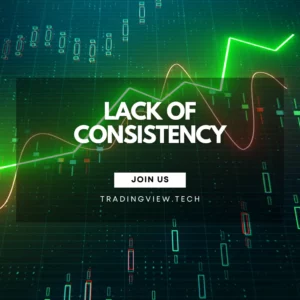In the fast-paced world of trading, timing refers to the ability to enter and exit positions at moments that maximize profit and minimize loss. It’s not just about choosing the right asset—it’s about choosing the right moment to act. This decision is often the thin line that separates successful trades from costly ones. Even a well-analyzed trade setup can result in losses if the entry is too late or the exit is mistimed.
Timing in trading isn’t about prediction; it’s about reacting intelligently to signals and conditions as they unfold. Markets are dynamic—prices fluctuate based on a constant stream of information, sentiment, and technical factors. Traders who fail to adapt their timing strategies to these fluctuations often find themselves out of sync with the market. They may jump into a trade just as momentum fades or hold on too long, watching a profitable trade turn negative.
The impact of poor timing can be significant. Entering too late into a rally might mean buying at a peak, just before a correction. Exiting too early from a winning trade can mean leaving substantial profits on the table. On the other hand, holding onto a losing trade too long in the hope of a reversal often leads to deeper losses. Across thousands of trades, these timing missteps compound, dragging down overall performance and trader confidence.
Ultimately, mastering timing is not about finding a perfect moment—there rarely is one. Instead, it’s about increasing your probability of success by combining technical signals, sound analysis, and emotional discipline. Traders who fail to recognize this often repeat the same mistakes, falling into destructive patterns that could have been avoided with a more structured approach to timing.
Common Timing Mistakes
Many traders—especially beginners—fall into common timing traps that compromise their strategies. These mistakes are often fueled by emotions, market noise, or a lack of a clear plan. Understanding these pitfalls is a crucial step toward avoiding them.
One of the most frequent errors is chasing price movements. A trader sees a stock or asset suddenly surging and, fearing missing out on potential gains, jumps in without proper analysis. Often, by the time they enter, the momentum has already slowed, and a pullback is imminent. For example, a trader might see Bitcoin spike by 5% in an hour and rush to buy, only to see it retrace shortly after—turning what looked like an opportunity into an instant loss.
Another widespread issue is exiting too early. Driven by fear of losing a small profit, some traders close their positions the moment they see any gain, even if the trade is unfolding exactly as planned. This approach can severely limit upside potential. Imagine a trader who buys a tech stock after a breakout, sets a target for a 10% gain, but sells at 2% profit at the first sign of minor resistance. Later, the stock climbs 15%—a missed opportunity that adds up over time.
Then there’s hesitating too long before entering or exiting a trade. This often results from indecision, second-guessing one’s strategy, or overanalyzing market data. For instance, a trader identifies a bullish pattern but waits for additional confirmation that never comes. The asset rallies, and by the time the trader decides to act, the optimal entry is long gone. Conversely, some hold onto losing trades too long, hoping the market will reverse in their favor—only to watch losses mount.
All of these timing errors—chasing, premature exits, and hesitation—stem from a lack of structure and discipline. They reveal a reactive mindset rather than a proactive one. The goal is to shift from emotional decision-making to a system-driven approach, where each entry and exit is guided by predefined criteria rather than gut feelings or fleeting market trends.
Psychological Factors Behind Poor Timing
Poor timing in trading is rarely just a technical failure—it’s often a psychological one. Trading is as much a mental game as it is a strategic or analytical one, and emotions frequently drive traders to act irrationally. Among the most common emotional culprits are fear, greed, and impatience, each of which can severely distort a trader’s sense of timing.
Fear can manifest in several forms. Fear of loss may cause a trader to exit a position too early, abandoning their strategy at the first sign of volatility. Fear of missing out (FOMO) can push a trader to enter a trade impulsively, chasing a price that’s already moved significantly. This often leads to buying at a peak or selling at a low—classic timing errors.
Greed, on the other hand, can trick traders into staying in a position for too long. When a trade is going well, the temptation to hold out for even greater profits can override rational decision-making. A trader who ignores their target or trailing stop in pursuit of a “home run” often watches as a winning trade turns against them, simply because they didn’t take profits when the market was offering them.
Impatience also plays a major role. Markets often require patience and discipline. A trader who enters a position too early, unwilling to wait for proper confirmation, may find themselves on the wrong side of the trend. Similarly, impatience can cause someone to exit too soon because the trade is “taking too long” to develop—again missing out on the intended opportunity.
Beyond these emotions, cognitive biases also cloud timing decisions. One common bias is hindsight bias—the belief, after an event has occurred, that it was predictable all along. Traders might convince themselves they “knew” what would happen but forget that their timing was actually poor. This leads to overconfidence and repeated misjudgments in the future.
Confirmation bias is equally dangerous. Traders often seek out information that supports their existing view, ignoring signals that contradict their desired outcome. For example, a trader who wants to buy may only focus on bullish indicators, dismissing bearish warnings. This bias can delay exits or lead to early entries based on selective analysis, undermining timing entirely.
Overcoming these psychological barriers requires self-awareness, consistent practice, and a structured trading plan. Journaling trades, reviewing past performance, and incorporating risk management rules can help traders recognize emotional patterns and correct them over time. Trading success starts in the mind, and timing improves drastically when emotions and biases are brought under control.
Using Technical Indicators for Better Timing
While emotions and biases can sabotage timing, technical indicators provide objective, data-driven signals that help traders make more disciplined decisions. These tools analyze price, volume, and momentum to offer clues about when to enter or exit a trade. While no indicator is foolproof, combining several effectively can dramatically improve timing accuracy.
One of the most widely used tools is the Moving Average (MA), particularly the Simple Moving Average (SMA) and the Exponential Moving Average (EMA). MAs smooth out price data to reveal trends and potential reversals. For instance, a trader might use a 50-day and 200-day MA to identify a “golden cross” (when the short-term MA crosses above the long-term MA), signaling a potential bullish entry point. Conversely, a “death cross” may indicate it’s time to exit or go short.
The Relative Strength Index (RSI) is another essential indicator. It measures the speed and change of price movements on a scale from 0 to 100. RSI values above 70 typically indicate overbought conditions, suggesting a potential reversal or exit point. Readings below 30 may indicate oversold conditions and a possible buying opportunity. The key is not to act on RSI alone but to use it in conjunction with trend analysis or candlestick patterns for confirmation.
MACD (Moving Average Convergence Divergence) is a momentum-following indicator that uses the relationship between two EMAs to signal changes in trend direction. When the MACD line crosses above the signal line, it may indicate a bullish trend is beginning. Conversely, a bearish crossover can signal a downtrend. Timing entries and exits around these crossovers can be effective, especially when supported by volume or price action.
Bollinger Bands consist of a moving average and two standard deviation lines. These bands expand and contract based on volatility. When the price touches the upper band, it may be considered overbought; when it hits the lower band, oversold. Traders often use Bollinger Band “squeezes”—when the bands contract sharply—as indicators of upcoming breakouts, offering ideal timing windows for entry.
Tips for Effective Use of Technical Indicators:
- Combine, don’t rely on one: Use multiple indicators for confirmation. For example, a buy signal from RSI is stronger when supported by a bullish MACD crossover.
- Backtest your setup: Before applying indicators in real trades, test them on historical data to understand how they behave in different market conditions.
- Customize settings: The default settings (e.g., 14-period RSI or 20-period Bollinger Bands) may not suit all markets or timeframes. Adjust them to fit your strategy.
- Watch for divergence: If price is making new highs but RSI or MACD is not, it can signal a weakening trend and an opportunity to exit before a reversal.
Ultimately, indicators are tools, not oracles. They are most effective when integrated into a broader strategy that includes risk management, psychological discipline, and clearly defined rules. When used consistently and interpreted with context, technical indicators can help traders move from emotional, reactive timing to calculated, proactive execution.
Setting Alerts and Creating a Timing Plan
One of the most effective ways to improve timing in trading is by creating a predefined plan and supporting it with automated tools like price alerts and trading journals. These strategies remove the guesswork and emotional impulses that so often derail timing, replacing them with clear, repeatable systems.
Price alerts are a simple but powerful tool. Nearly every trading platform or brokerage allows traders to set alerts for specific price levels, indicators, or volume spikes. For example, instead of constantly monitoring the charts, a trader can set an alert for when a stock reaches a key support or resistance level, or when the RSI crosses a specific threshold. These alerts act as a personal assistant, tapping you on the shoulder when it’s time to reevaluate a potential move—based not on emotion, but on the exact criteria you’ve planned in advance.
More importantly, these alerts should be tied to clear, rule-based conditions that guide your actions. For instance: “If the 50-day moving average crosses above the 200-day moving average and volume spikes by 20%, then I will consider entering a long position.” By writing out conditions like this before you trade, you effectively program yourself to respond only when a strategy is aligned—not when the market feels exciting or threatening. This structured thinking removes the “heat of the moment” from your decisions and replaces it with discipline.
A trading journal is equally critical for refining timing over the long term. This isn’t just a place to record wins and losses—it’s a tool for identifying patterns in your timing behavior. Logging the time, reason, and emotional state around every entry and exit will reveal whether you consistently enter too early, exit too late, or hesitate at key moments. Over time, these insights will allow you to adjust your strategy and eliminate costly habits.
In fact, many professional traders review their journals more than they review charts. The goal is not just to trade, but to learn how you trade—and to constantly improve. A trader who combines alerts, rules-based decision-making, and personal reflection will have a tremendous edge over one who relies on gut instinct and emotion alone.
Conclusion and Key Takeaways
Timing is not everything in trading—but it’s close. Even the best trade ideas can fail without proper execution. Whether it’s entering a breakout too late or holding onto a losing position too long, poor timing can erase gains and magnify losses. But this isn’t a mystery that can’t be solved—it’s a skill that can be developed with awareness, discipline, and the right tools.
The most successful traders are not those who always pick the perfect moment. They’re the ones who consistently follow a well-defined process: using technical indicators for clarity, staying aware of their psychological biases, and acting only when their plan tells them to. Tools like moving averages, RSI, and MACD provide guidance, but it’s the trader’s ability to interpret and apply them with emotional control that makes the real difference.
By incorporating price alerts, trading journals, and predefined entry/exit rules, traders can move away from reactive decision-making and toward a more systematic, rational approach. Over time, this builds confidence, sharpens execution, and improves long-term performance.In the end, mastering timing is about much more than watching the clock or catching every swing. It’s about building a process that aligns your strategy, tools, and mindset so that when opportunity arises, you’re prepared to act—not guess. And that’s the true foundation of trading success.



